Species comparison: Encelia californica, Encelia farinosa, and hybrids |
||
| Bush sunflower, Encelia californica | Putative hybrid, Encelia californica x farinosa | Brittlebush, Encelia farinosa |
| Heads generally solitary. Leaves glabrous or hairy. Leaves green, glabrous to sparsely and minutely strigose or bristly. A common species through much of Orange County, from immediate coastal bluffs through the coastal plain and up to moderate elevations of the Santa Ana Mountains (a cismontane species). |
Heads 3-9 in panicle-like cluster. Strictly an inland species of hotter, drier areas, especially the western deserts (a transmontane species). This species was probably never native to Orange County, but many years ago it became a common component of revegetation and hydroseeding projects at numerous locations throughout the county. Caltrans used this practice extensively and many E. farinosa were used as "native" revegetation, recently on the Foothill Transportation Corridor. The species has since naturalized from these introductions and is now seen all over the county, especially near these plantings. |
|
 Upper Newport Bay Nature Preserve, Orange County, CA. 1/27/13. © Peter J. Bryant |
 Aliso Viejo, Orange County, CA. 1/25/11. © Peter J. Bryant |
 Anza Borrego Desert State Park, San Diego County, CA.1/25/13. © Peter J. Bryant |
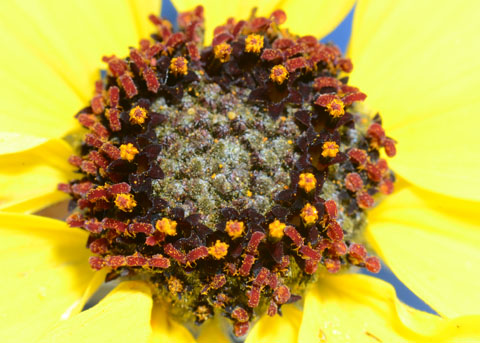 Upper Newport Bay Nature Preserve, Orange County, CA. 1/25/13. © Peter J. Bryant |
 Laguna Beach, Orange County, CA. 1/5/12. © Peter J. Bryant |
 Anza Borrego Desert State Park, San Diego County, CA.1/25/13. © Peter J. Bryant |
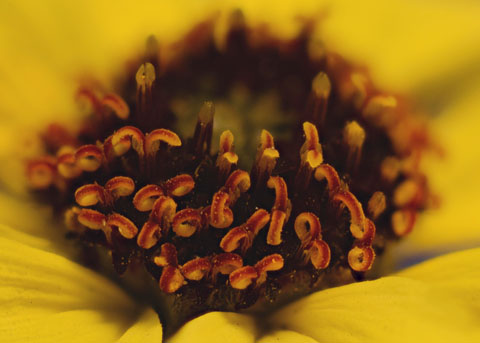 |
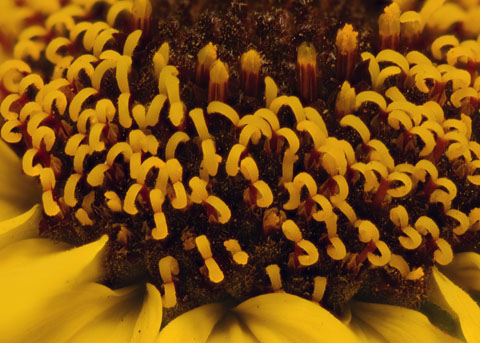 |
 |
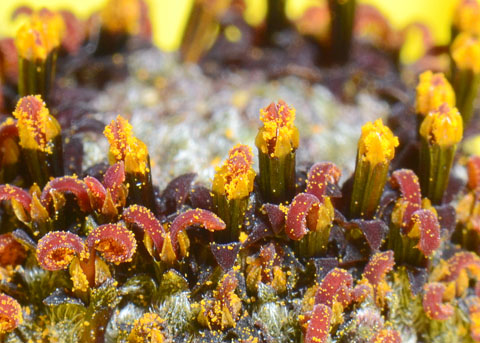 |
 |
 |
 |
 |
 |
| Disc florets: An early stage disc floret is a vertical tube consisting of five fused anthers surrounding the style and producing pollen on the inside of the tube. | ||
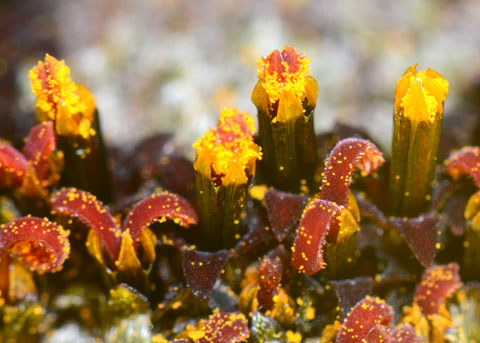 |
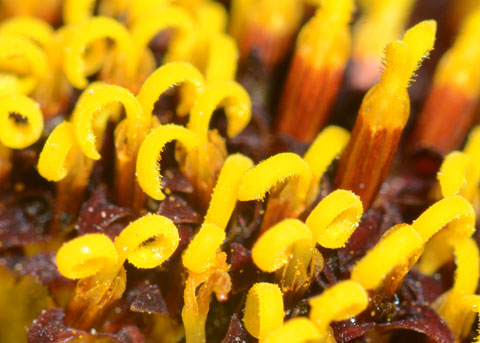 |
 |
| As the floret matures towards the edge of the disc the two-branched stigma emerges from the top of the anther tube and in the process collects pollen on the brushes under each branch. | ||
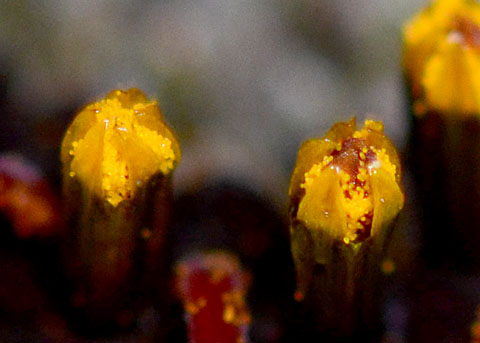 |
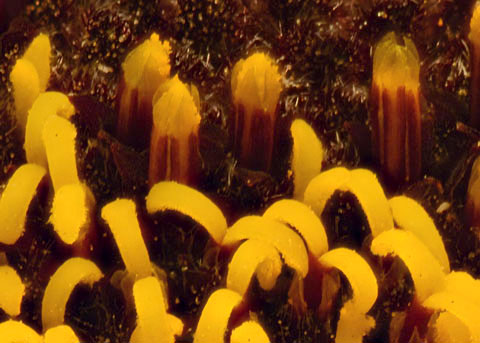 |
 |
 |
 |
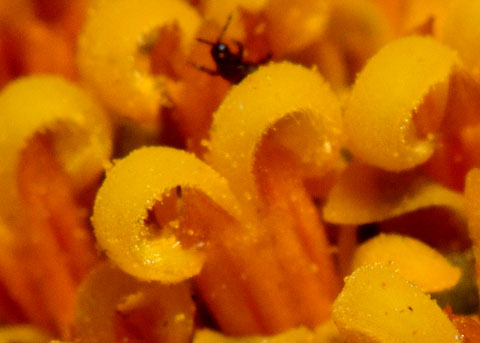 |
The pollen does not germinate on the stigma because of self-incompatibility, but its location on the stigma facilitates collection by insect pollinators. |
||
| Interactions with insects: Flower thrips | ||
| More on putative Encelia californica x farinosa hybrids: | ||
,%20californica%20x%20farinosa%20(M),%20californica%20(R).jpg) Encelia farinosa (L), californica x farinosa (M), californica (R). OC Great Park, extreme E, nr Borrego Wash, 12-25-11. © Ron Vanderhoff. |
||
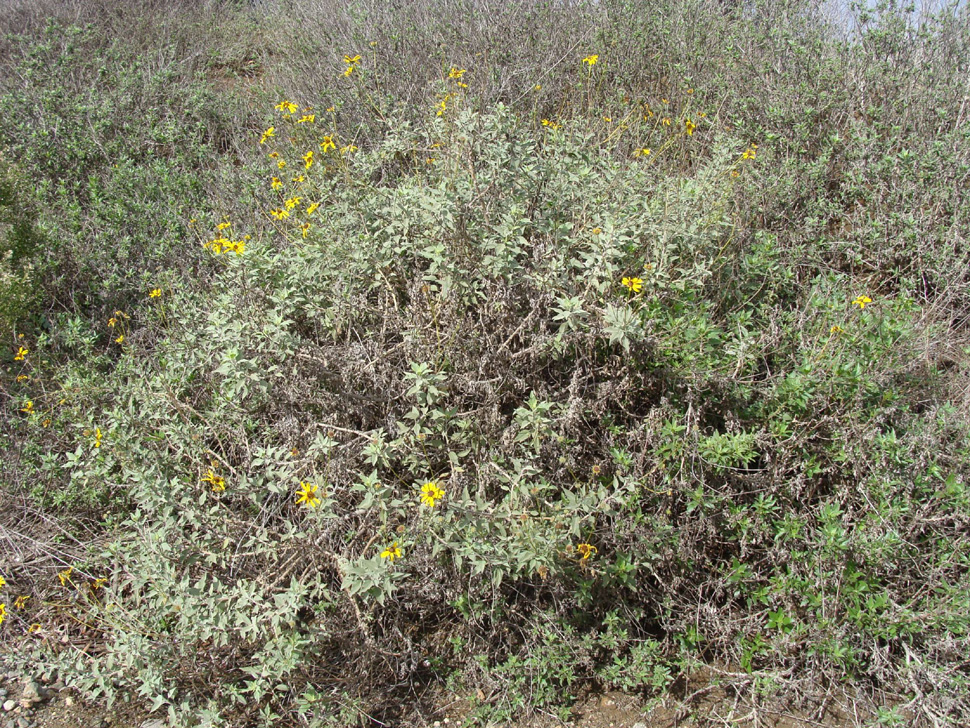 Encelia californica x farinosa, Pacific Park Dr., Crown Val. to .35 mi NW, 12-13-12. © Ron Vanderhoff. |
||
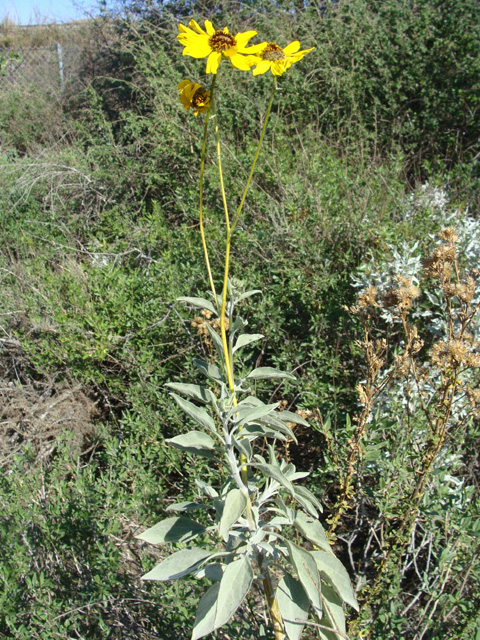 Encelia californica x farinosa, OC Great Park, extreme E, nr Borrego Wash, 12-25-11. © Ron Vanderhoff. |
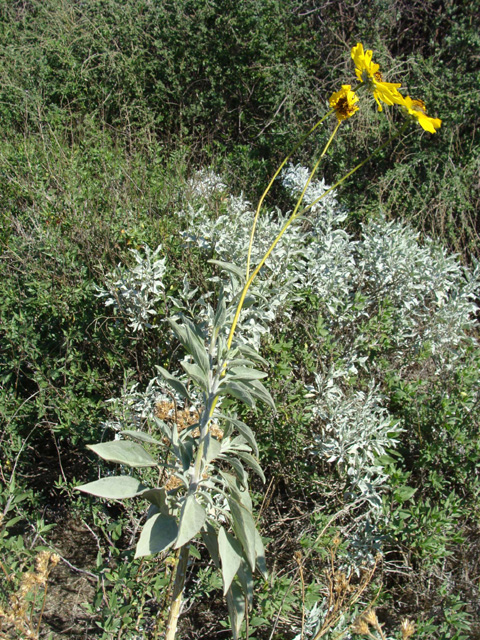 Encelia californica x farinosa, OC Great Park, extreme E, nr Borrego Wash, 12-25-11. © Ron Vanderhoff. |
|
 Encelia californica x farinosa (immediate foreground), Encelia farinosa (to left and in distance). OC Great Park, extreme E, nr Borrego Wash, 12-25-11. © Ron Vanderhoff. |
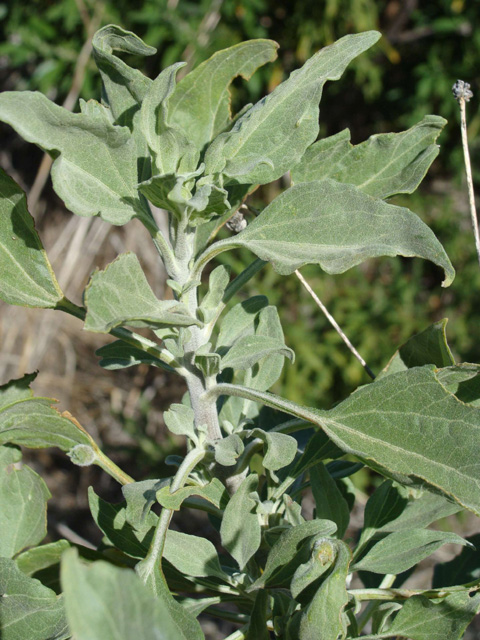 Encelia californica x farinosa, OC Great Park, extreme E, nr Borrego Wash, 12-25-11. © Ron Vanderhoff. |
|
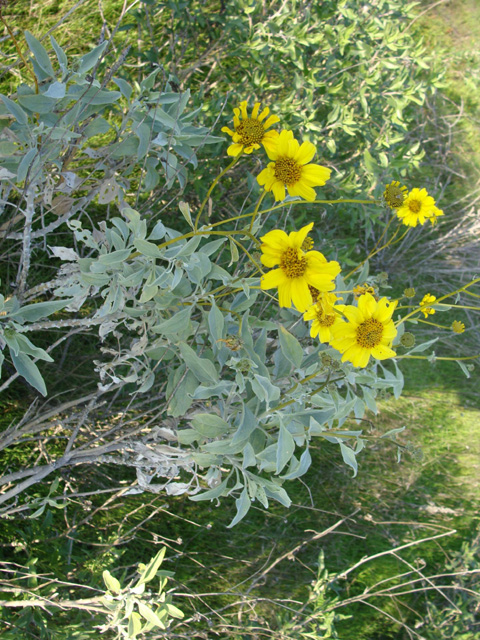 Encelia californica x farinosa. The flower heads of E. farinosa are typically in a panicle-like cluster and short peduncles, while those of E. californica are more solitary and with long peduncles. This putative hybrid shows typical intermediate characteristics. OC Great Park, extreme E, nr Borrego Wash, 2-3-10. © Ron Vanderhoff. |
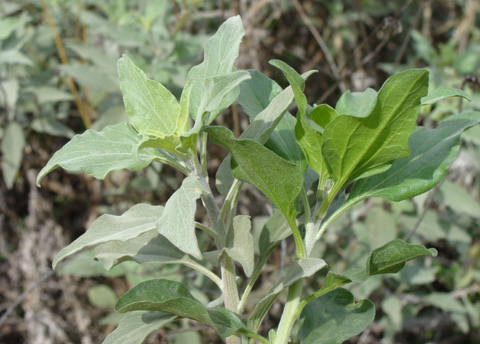 Encelia californica x farinosa L, californica R, Pacific Park Dr., Crown Val. to .35 mi NW, 12-13-12. © Ron Vanderhoff. |
|
,%20californica%20x%20farinosa%20(R)2.jpg) Encelia farinosa (L), californica x farinosa (R), Sheep Hills, Aliso Viejo, 3-1-12. © Ron Vanderhoff. |
||
| Back to Asteraceae of Orange County, California Back to Plants of Orange County, California Back to Natural History of Orange County, California |
||